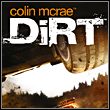Advanced settings | Rally car configuration
Wheels
Camber
Increasing the negative camber settings on a rally vehicle allows it to use its tires more efficiently while cornering. This can be an advantage on tarmac stages where there is a lot of cornering involved. If the settings are pushed too high, the vehicle's braking ability will be affected.
Drivers can set up the front and rear camber separately to adjust how the vehicle behaves during cornering. This is a good way of subtly affecting the understeer and oversteer characteristics of the vehicle and should avoid any drastic changes to the handling.
Also, before you start your proper ride, test the manipulation's effects on the shakedown.
Most racing and rally cars run with a certain amount of negative camber.
Toe angle
By giving the front wheels a slight toe out angle it is possible to give the vehicle more stability after turning into a corner, however, you will lose some responsiveness in the steering. A slight toe in angle on the front wheels works inversely and will increase the steering response but may cause the vehicle to lose stability after turning into the corner.
So, if you're having difficulty with turning the car into hairpins, toe-out on the front wheels can help. If the car's wandering over the road when you want it to go straight, try toeing the front wheels in. At the rear, a touch of toe-in can help tame an oversteering car.
Increasing the rear toe angle of the vehicle will have a more pronounced effect on the vehicle's handling. When adjusting the rear toe angle it is wise to make small adjustments and then test the feel of the vehicle to see how it has affected it. Generally you should avoid to toe-out the rear wheels as this can make the car very unstable.
Suspension Damping
Bump
Increasing the absorption of the dampers will make the vehicle feel more rigid whilst decreasing this value will make the vehicle feel softer. If you set the value of the dampers too high the car will have a tendency to bounce off the road. So, if your car is shaky or bouncy after bumps, you need to soften your dampers and/or suspension (springs), but if you set the value too low the damper will fail to absorb bumps within the road causing the bottom of the vehicle to hit the track surface.
Harder suspension springs (look above) require stronger dampers. Adjusting them on their own producing an effect similar to that of adjusting suspension stiffness, but where they're really effective is in tweaking the car's behaviour in transitions: turning into the corner and coming out.
If you are oversteering you can reduce the damper in the rear/increase the damper in the front. Anti-roll (sway bar) can also be applied stiffer in the front and looser in the rear.
Rebound
Rebound settings are also very important as they affect the decompression of the damper. However, you should avoid using too soft settings. Rebound damping should usually be set at around 2/3rds of bump.
Fast Bump
Fast bump is needed for stages with lots of jumps with hard landings: your normal bump and rebound settings will contend with most of the track, but for those hard landings fast bump will kick in and save your suspension.
"Fast" in this case is referring to vertical wheel speed, not the car's speed. What this adds is the capability to have an extra damping force applied when the wheel is moving very fast upwards (landing from a jump, for example, or on rough surfaces.
You should make the strength of the fast bump higher than your bump setting and make the speed activation setting high enough that the fast bump setting is not being used all the time.
You are not permitted to copy any image, text or info from this page. This site is not associated with and/or endorsed by the Codemasters or Codemasters. All logos and images are copyrighted by their respective owners.
Copyright © 2000 - 2025 Webedia Polska SA for gamepressure.com, unofficial game guides, walkthroughs, secrets, game tips, maps & strategies for top games.
